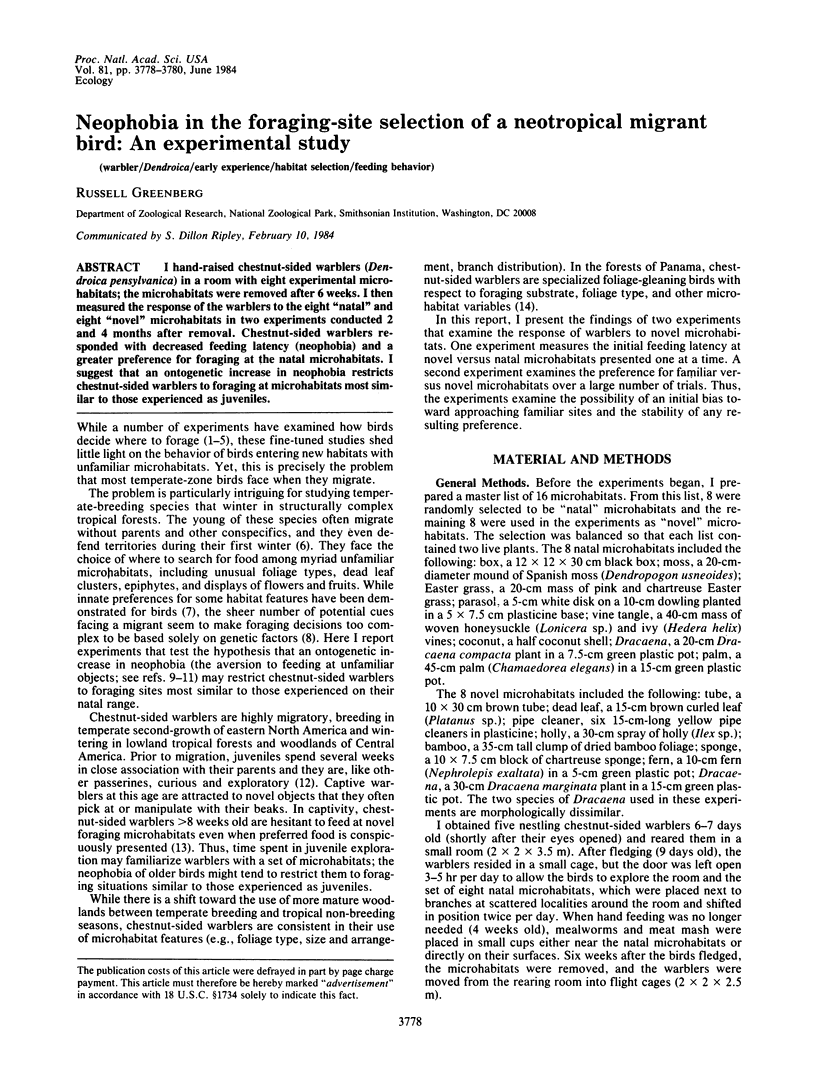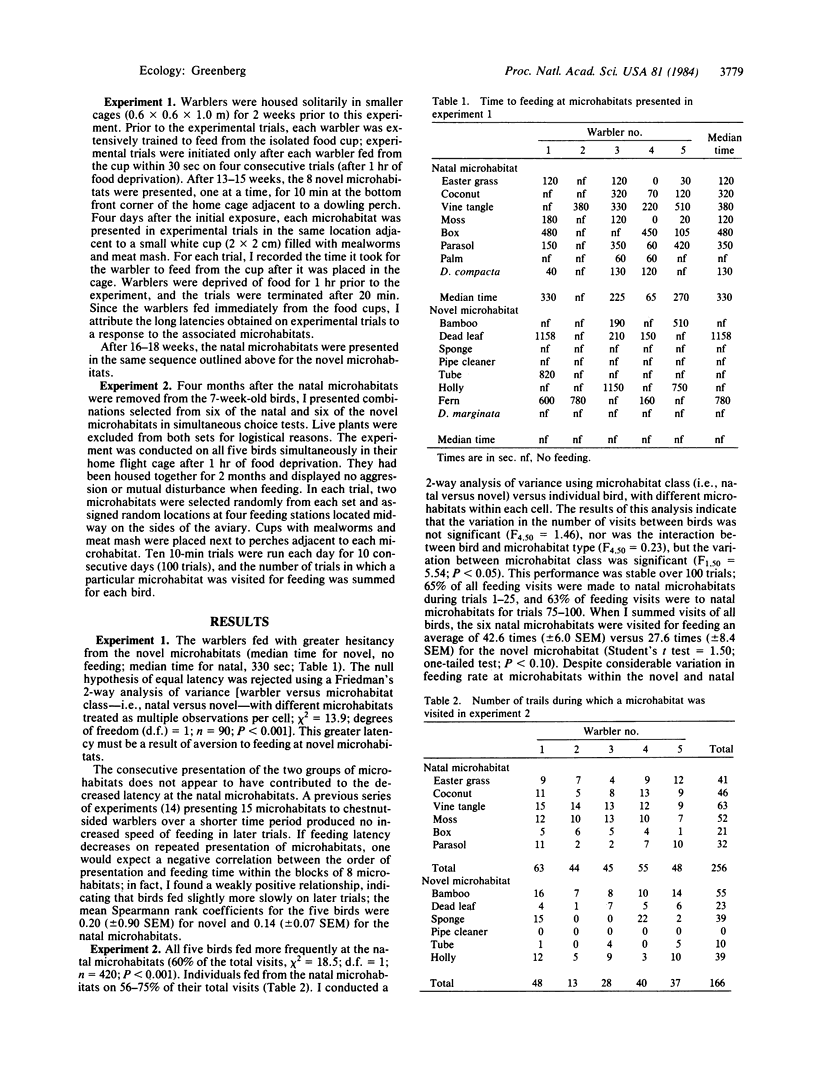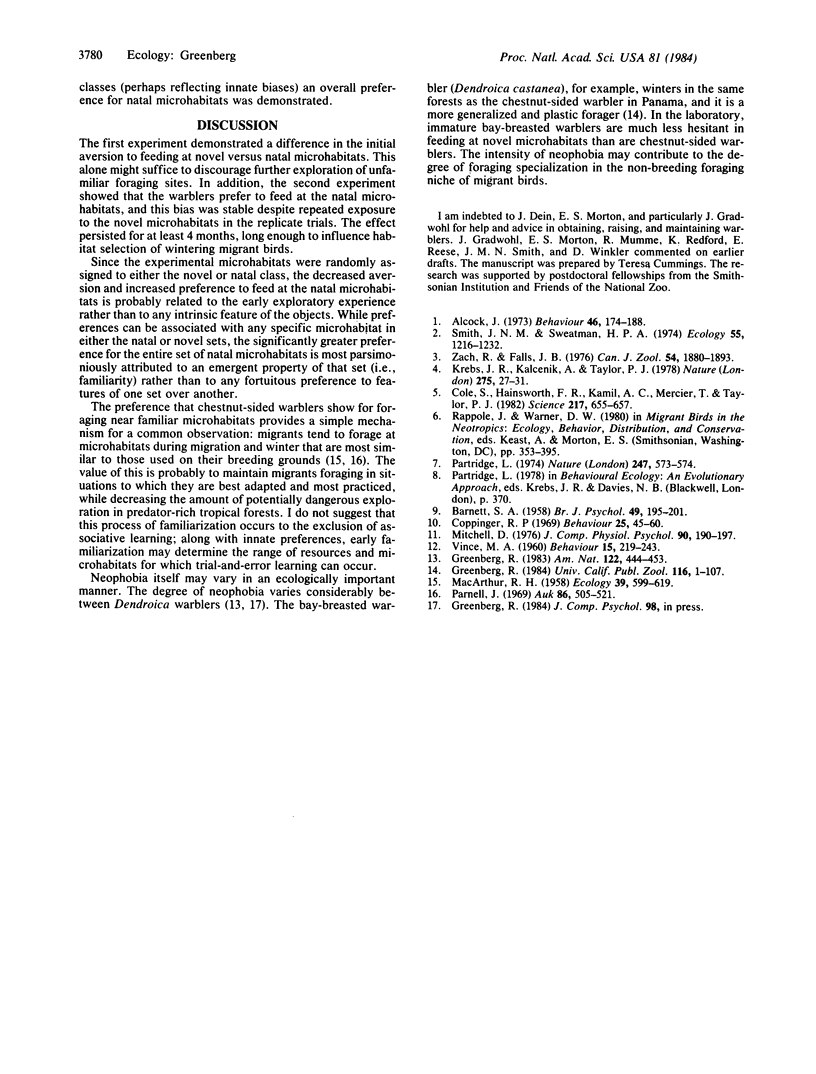Abstract
I hand-raised chestnut-sided warblers (Dendroica pensylvanica) in a room with eight experimental microhabitats; the microhabitats were removed after 6 weeks. I then measured the response of the warblers to the eight “natal” and eight “novel” microhabitats in two experiments conducted 2 and 4 months after removal. Chestnut-sided warblers responded with decreased feeding latency (neophobia) and a greater preference for foraging at the natal microhabitats. I suggest that an ontogenetic increase in neophobia restricts chestnut-sided warblers to foraging at microhabitats most similar to those experienced as juveniles.
Keywords: warbler, Dendroica, early experience, habitat selection, feeding behavior
Full text
PDF


Selected References
These references are in PubMed. This may not be the complete list of references from this article.
- BARNETT S. A. Experiments on neophobia in wild and laboratory rats. Br J Psychol. 1958 Aug;49(3):195–201. doi: 10.1111/j.2044-8295.1958.tb00657.x. [DOI] [PubMed] [Google Scholar]
- Cole S., Hainsworth F. R., Kamil A. C., Mercier T., Wolf L. L. Spatial learning as an adaptation in hummingbirds. Science. 1982 Aug 13;217(4560):655–657. doi: 10.1126/science.217.4560.655. [DOI] [PubMed] [Google Scholar]
- Mitchell D. Experiments on neophobia in wild and laboratory rats: a reevaluation. J Comp Physiol Psychol. 1976 Feb;90(2):190–197. doi: 10.1037/h0077196. [DOI] [PubMed] [Google Scholar]


